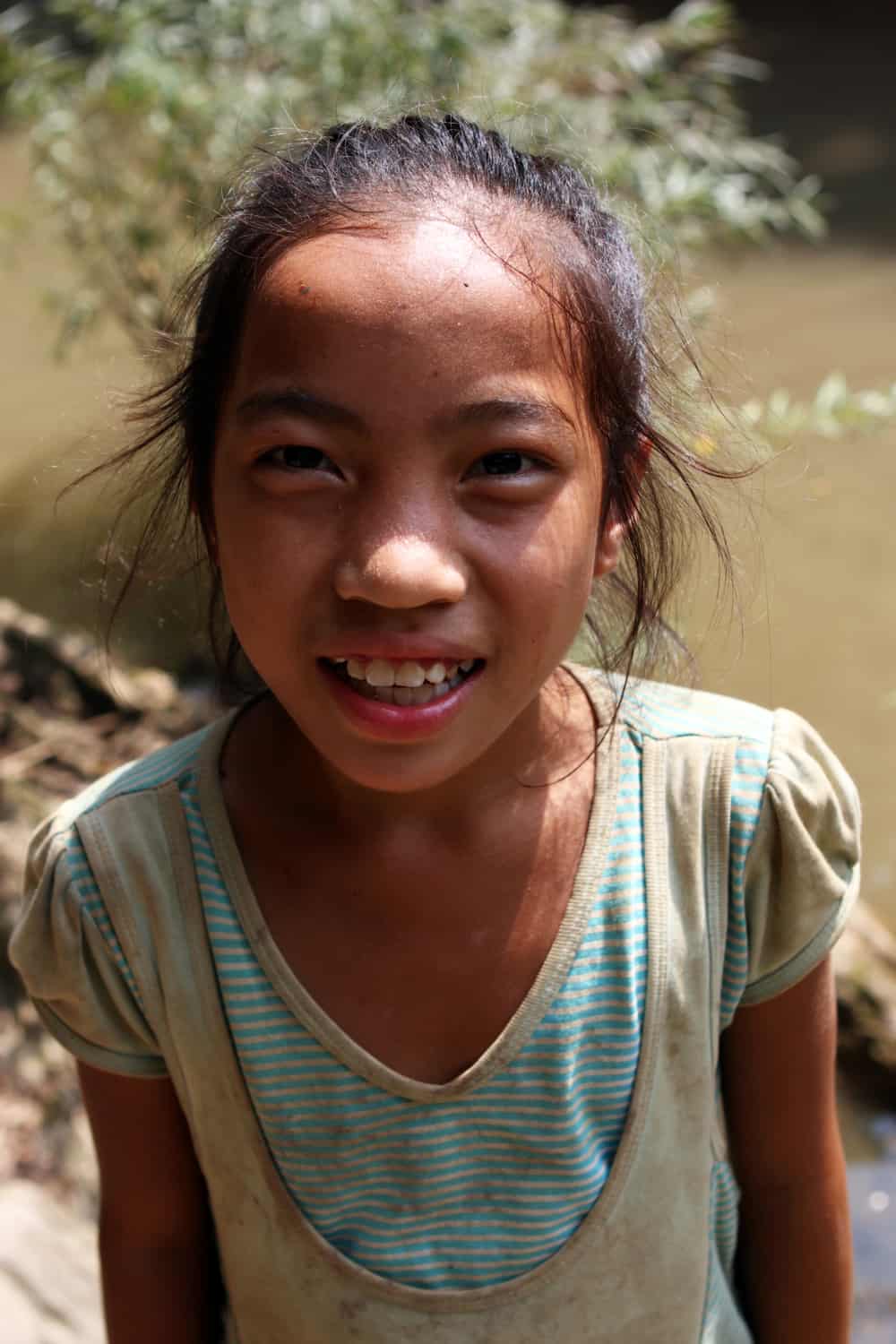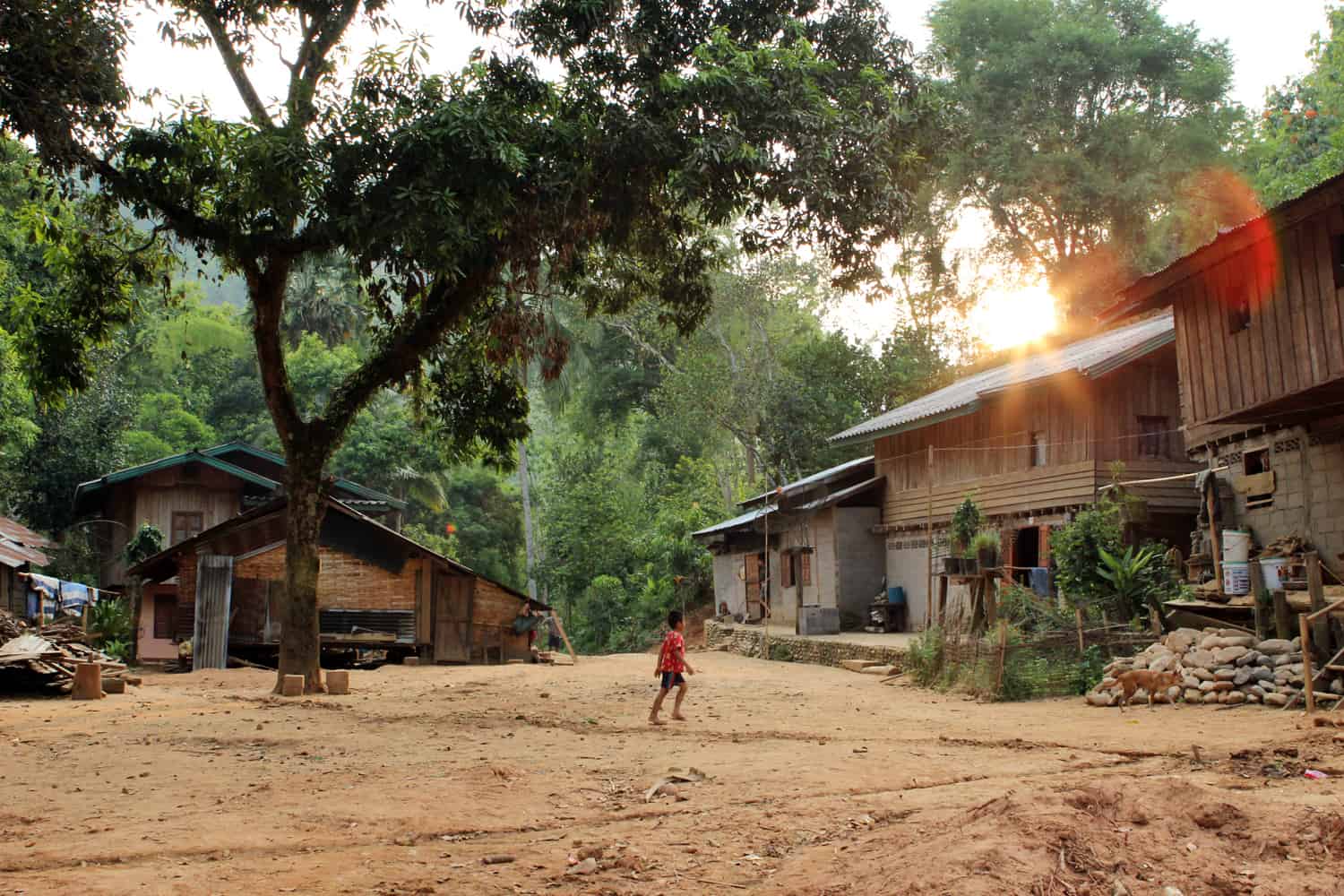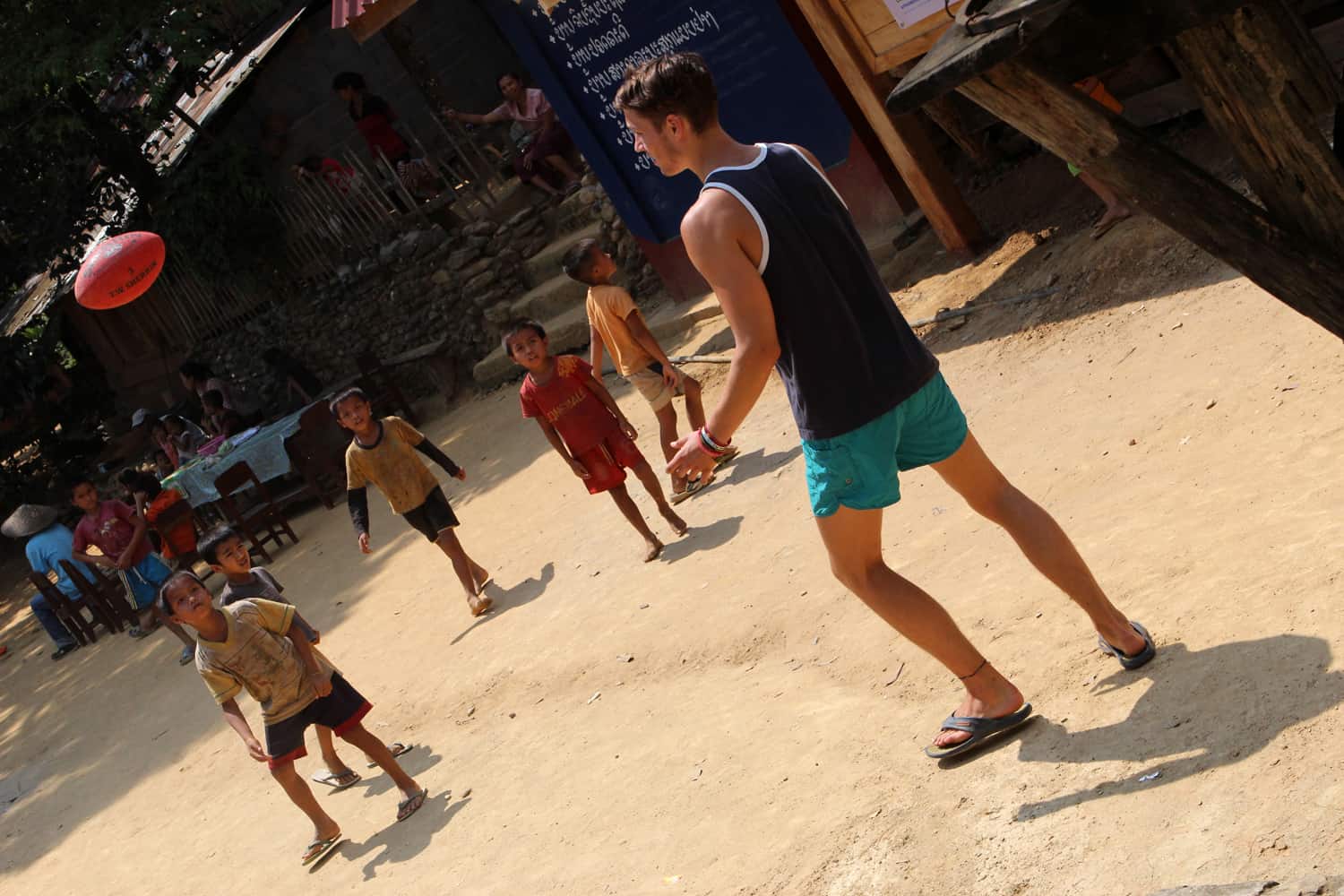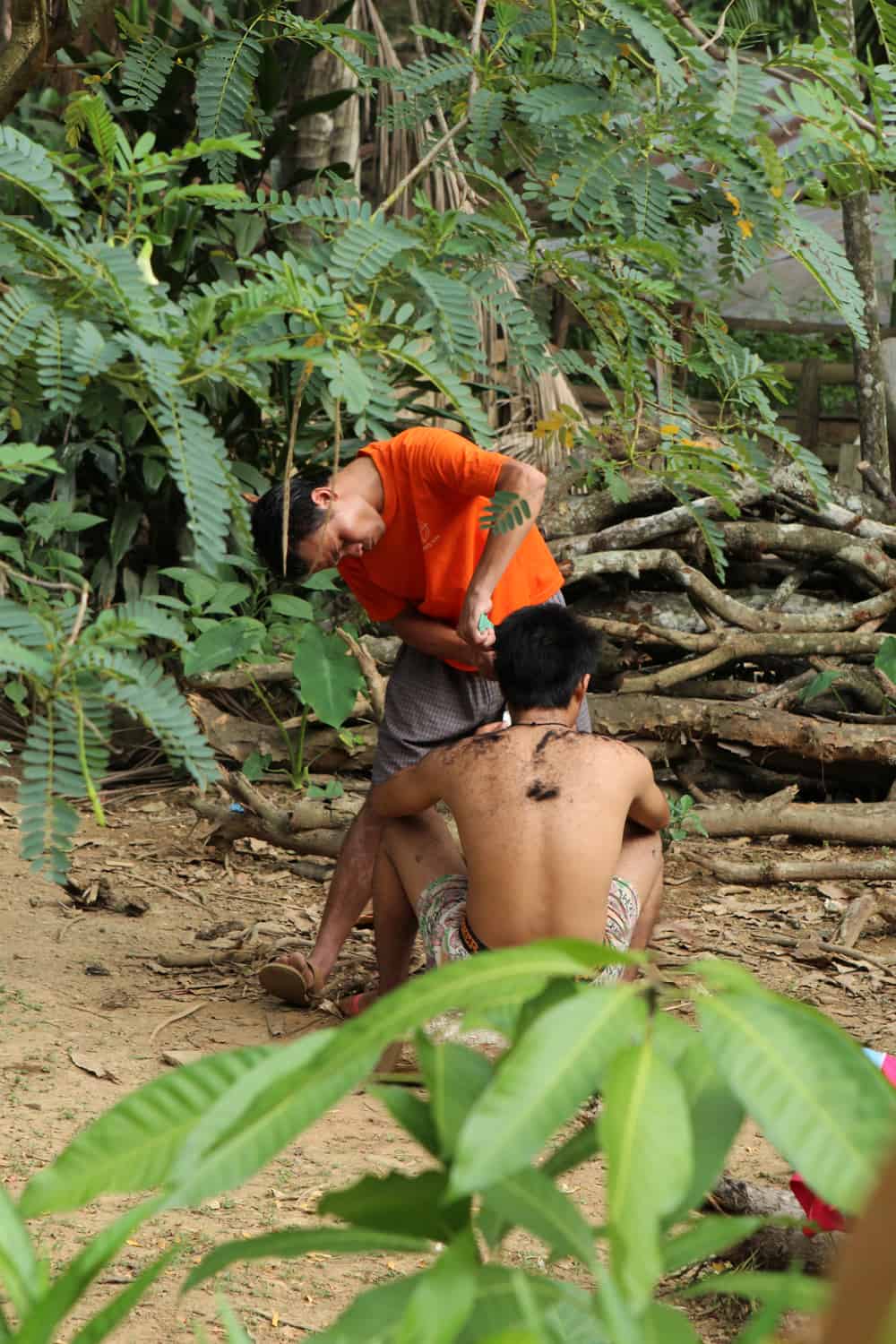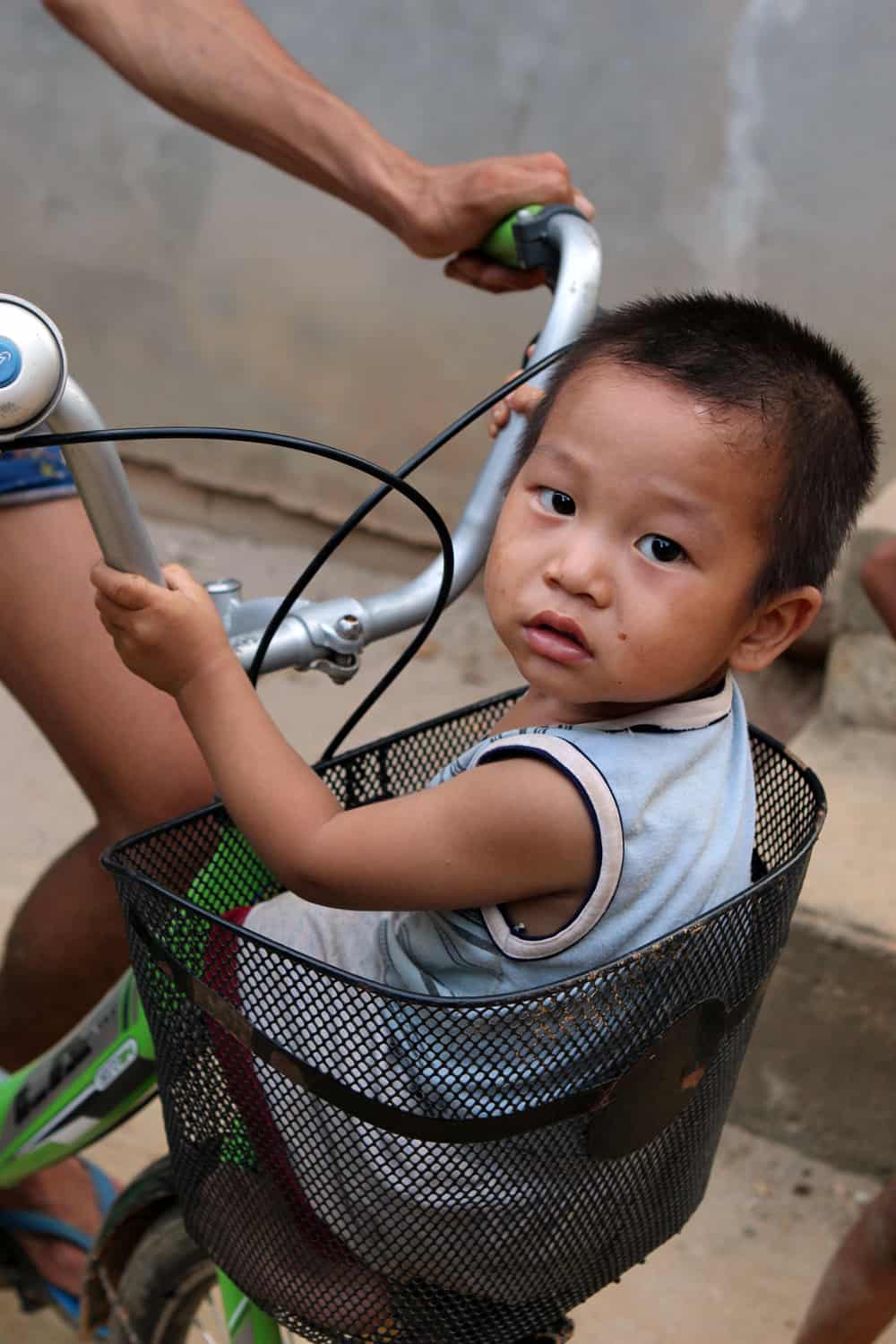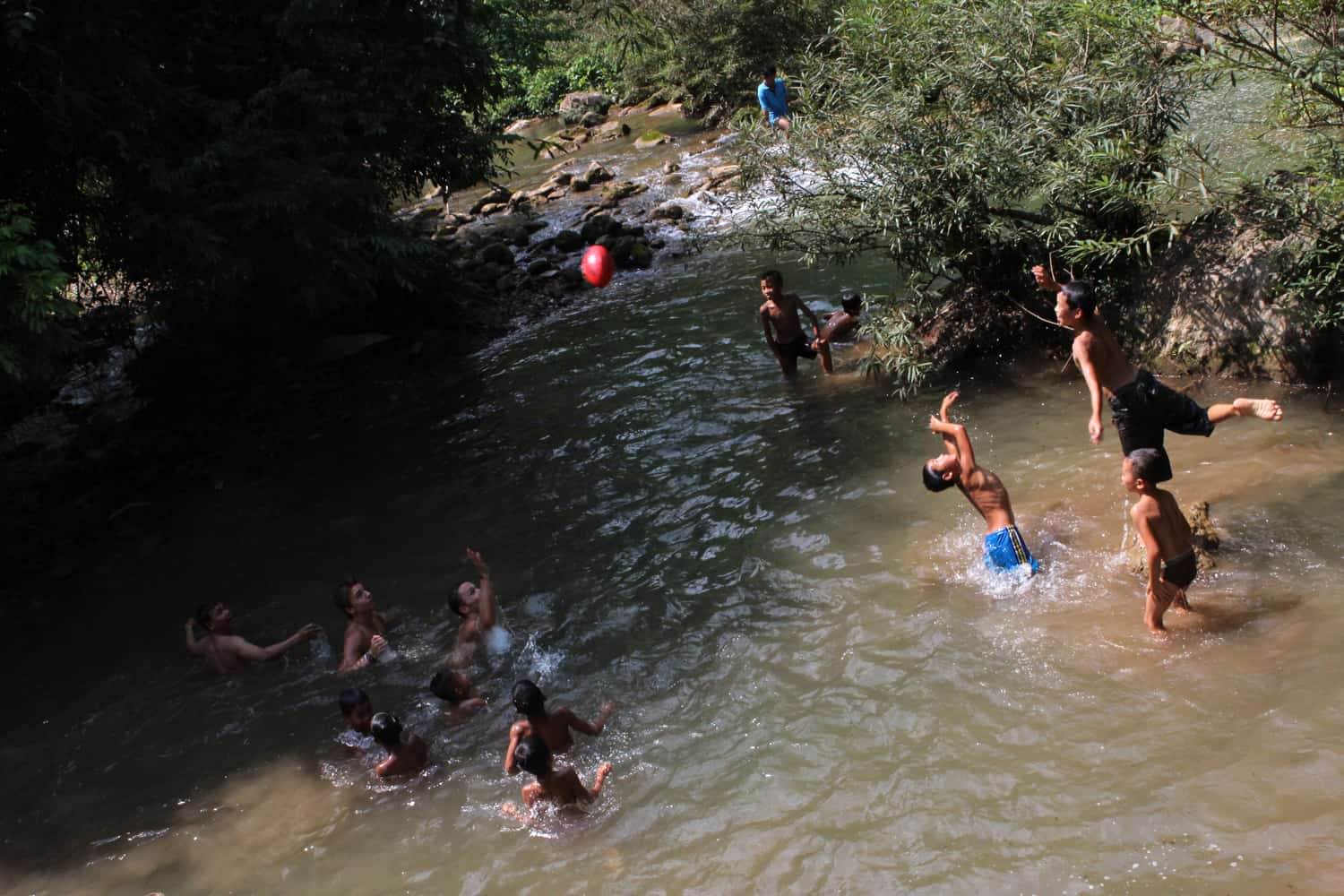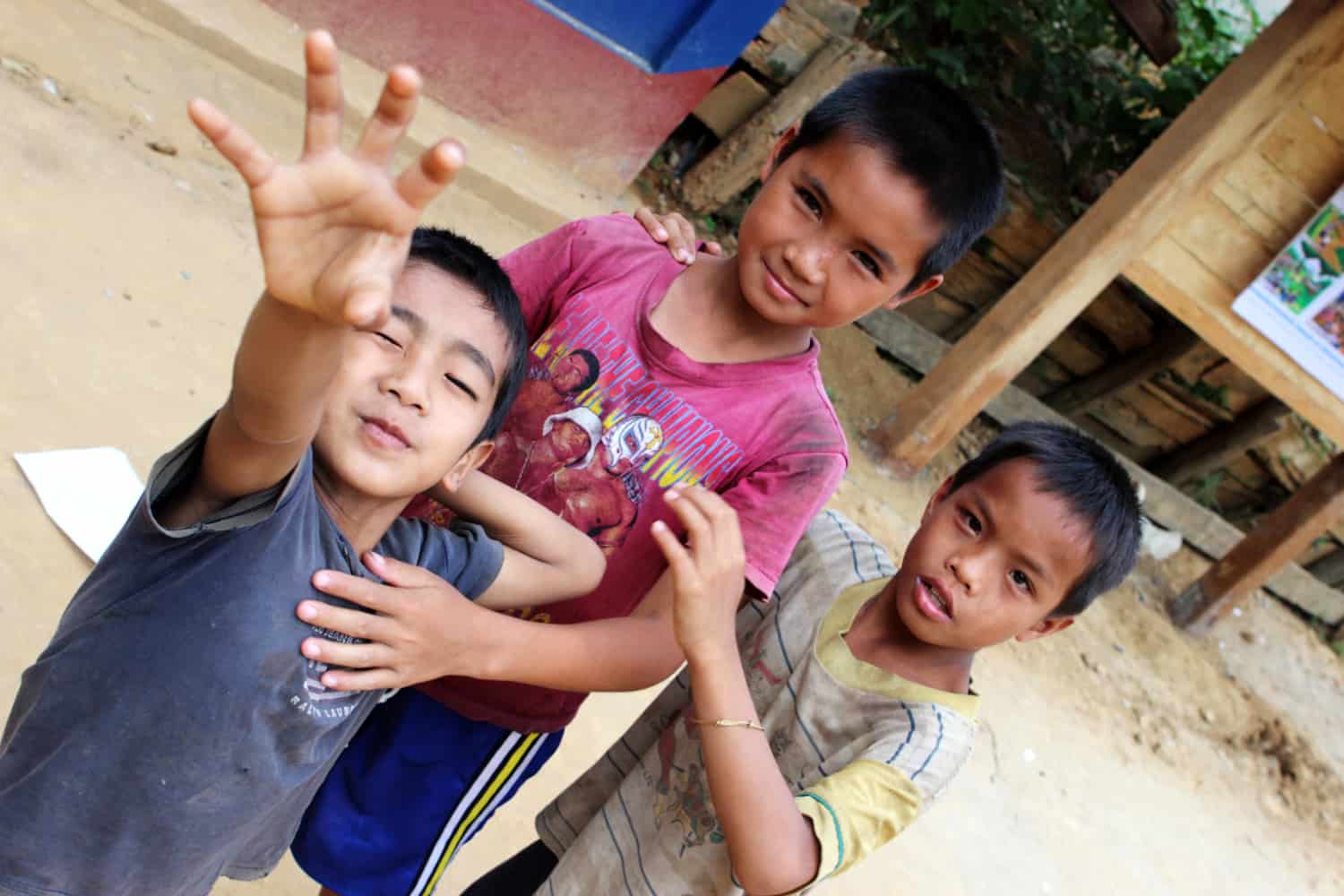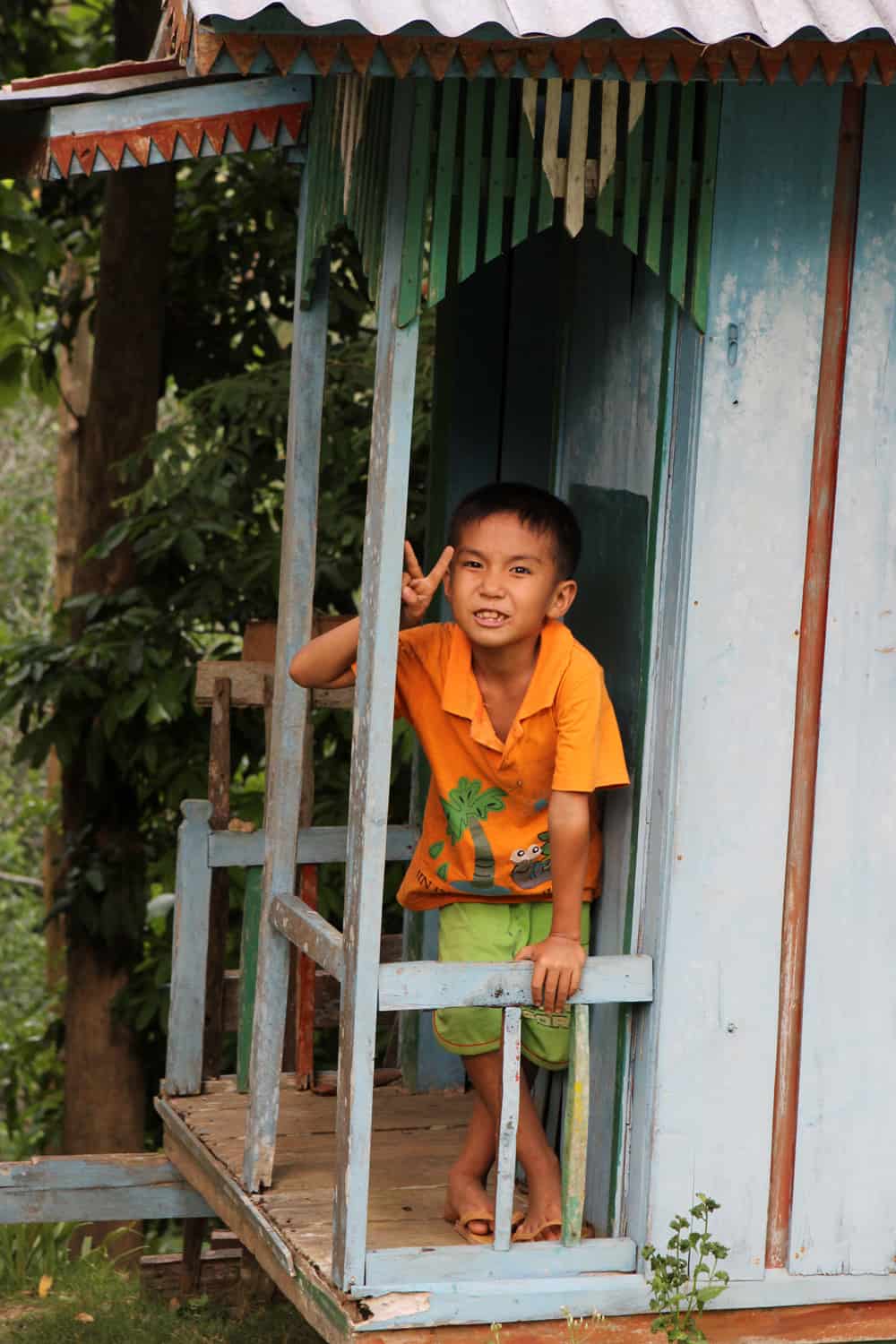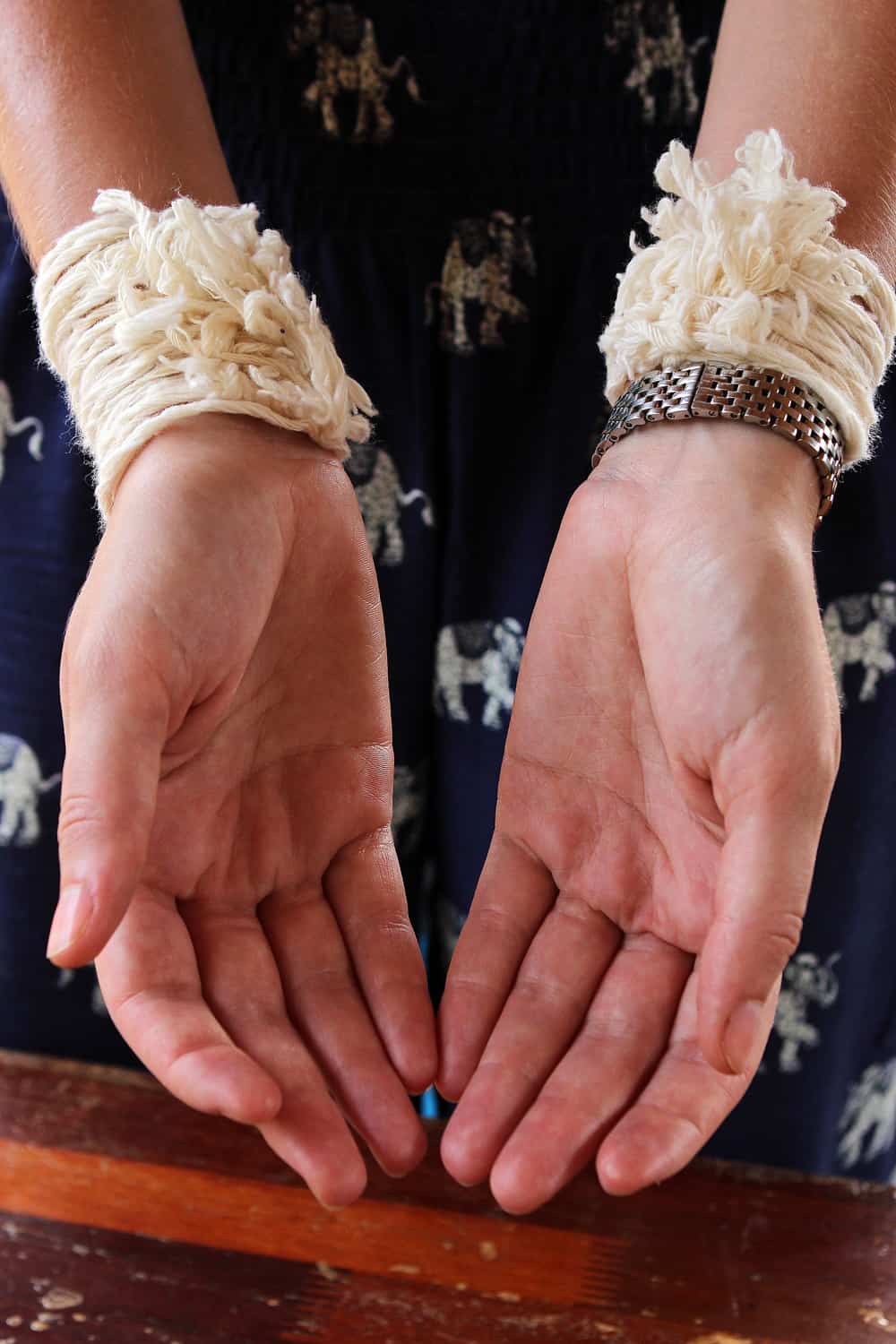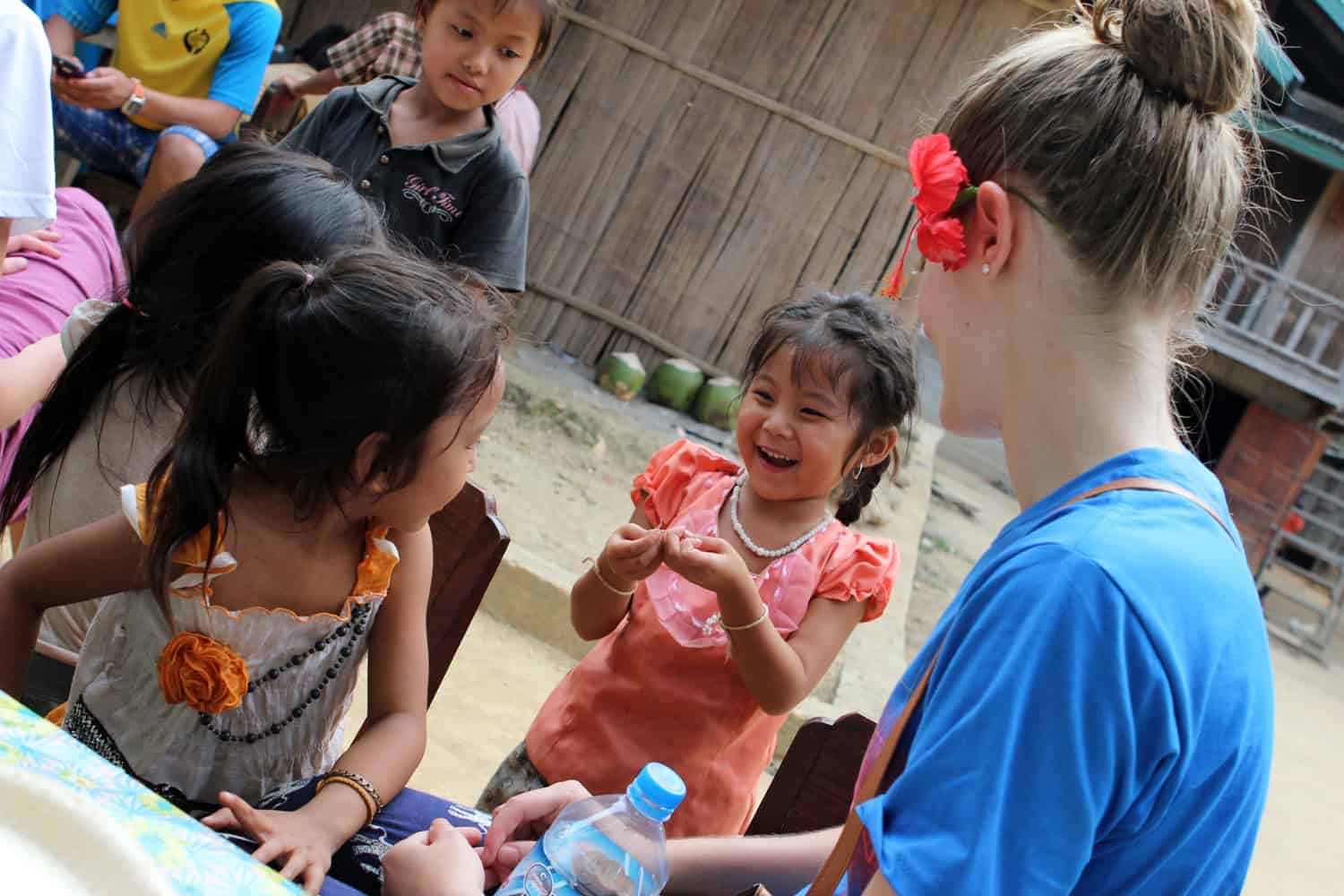The giggles were everywhere. They started on the concrete stairway leading up from the boat jetty. We’d just arrived at a small village along the Mekong River in Northern Laos, and the children were the first to greet us.
They sat or stood in clusters underneath the blue village gate, some grinning broadly, some a little more shyly. At the top, one boy reached out and offered us a small bouquet of flowers.
It was written on their faces. Welcome to Ban Lad Khammune.
This was the village that we’d be staying in for the night. We’d just left Pakbeng that morning, and ridden our own private slow boat down the Mekong.
After we arrived, our guide walked us to a two-storey wooden home in the centre of the village. We slipped our shoes off at the door and put our bags down under wall calendars of women in elegant, traditional Lao dresses. Faded and yellowing family photographs were on the walls, mostly graduation and wedding portraits, and a small house shrine with banana leaf and marigold offerings hung in the corner.
The children followed us in, and were giggling over their own images in the screen of Georgie’s smartphone. Outside, two of my fellow passengers had broken out a football and were playing a universal game with a group of boys: catch, throw, run, scuffle. The adults soon followed, some peeking into the windows of the house to watch us unpack, a few of the elders coming up to us and our guides to formally welcome us into the town. None of us could speak Lao, and the villagers had little English, but thankfully our guide was able to communicate for all of us.
In a way, I was surprised by the reception we had at the village. I’d spent some time travelling through the countryside in Northern Laos before… and had not always felt the most welcome. In those experiences, there had always been an element of trespassing. My friends and I had just showed up as innocent visitors, sometimes invited in but at other times the villagers stared at us curiously, and a little fearfully.
In the case of Ban Lad Khammune, however, the community had actually invited us to visit. Through Stray, which had approached the village in the year before to discuss a homestay programme, they were able to actually decide whether they wanted to open their home up to tourism.
Thankfully for us, they said yes. And that decision made all the difference.
We saw that difference first in the children, whose enthusiasm and curiosity about us lasted until the moment we left. They took us to their secret swimming hole, held tightly to our hands as we walked through the village and insisted on decorating our hair with bright red hibiscus flowers.
We saw it next in the men, who smiled and came to speak to us as we walked past their houses, showing how their bamboo fish traps worked and where their gardens were.
And we saw it in the women who invited us to sit and watch them work, winnowing rice or sorting cotton, to talk and learn even through the language barrier.
And we saw it later that night, when the villagers performed a traditional baci ceremony for us. To start, we gathered around a silver tray with bananas, rice, lao lao whiskey, and cookies as offerings in the centre of the room. Wearing dress shirts with a sash tossed over their left shoulder (this backpacker felt awfully underdressed), the villagers took turns tying white strings on our wrists as they murmured prayers under their breath. I asked our guide later what they meant.
“Long life, good luck, and happy travels,” he said.
I couldn’t help but smile. Welcome to Ban Lad Khammune, indeed.



